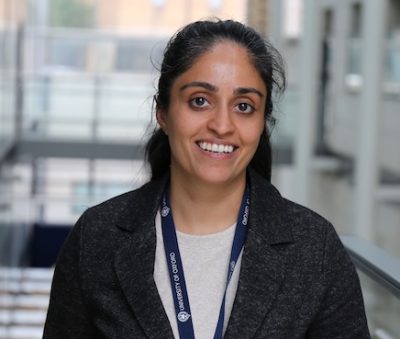When: 15:00-16:00 BST, 23 May 2025
Where: Online
Join our webinar with Prof. Meera Mehta (Oxford) and Dr. Lucy Costley-Wood (UCL)
Recycling Greenhouse Gases using Pnictogen Clusters
Clusters occupy the space between molecules and bulk solids.(1) Zintl clusters can be thought of as molecular mimics for heterogeneous materials: for example, the structure of [P7]3– can be viewed as a fragment of red phosphorus,(2) which is an inexpensive and abundant material, albeit a challenging one to study because of its poor solubility. In contrast, [P7] clusters, especially those that have been functionalized, are soluble in common laboratory solvents, offering a broader range of handles for in situ investigations. An improved understanding of reactivity patterns for [P7] could be extended to corresponding reactions with materials based on the many allotropes of phosphorus. Here we will discuss small molecule activations and catalysis with such clusters.(3-4)
1. van IJzendoorn, B.; Mehta, M. Dalton Trans. 2020, 49, 14758–14765.
2. Ruck, M.; Hoppe, D.; Wahl, B.; Simon, P.; Wang, Y.; Seifert G. Angew. Chem. Int. Ed. 2005, 44, 7616–7619.
3. van IJzendoorn, B.; Albawardi, S.F.; Vitorica-Yrezabal, I.J.; Whitehead, G.F.S.; McGrady, J.E.; Mehta, M. J. Am. Chem. Soc. 2022, 144, 21213–21223.
4. van IJzendoorn, B.; Albawardi, S.F.; Jobbins, W.D.; Whitehead, G.F.S.; McGrady, J.E.; Mehta, M. Nature Commun. 2024, 15, 10030.

image credit: Meera Mehta
Prof. Meera Mehta (Oxford) was born and raised in downtown Toronto Canada. She completed her honours undergraduate training from McMaster University (2008 – 2012) and PhD from the University of Toronto (2012 – 2017) under the mentorship of Prof Douglas Stephan. In 2018, she was awarded a Royal Society Newton International Fellowship to work with Prof Jose Goicoechea at the University of Oxford as a PDRA (2018 – 2019). After her postdoctoral training, Meera was recruited to the University of Manchester as a Lecturer in Inorganic Chemistry in 2020 to establish her independent research group. Meera then returned to Oxford in 2024 as an Associate Professor in Inorganic Chemistry where she is also currently a tutorial fellow at Trinity College.
Structural insights into Three-Way Catalysts: Combined Operando Studies of Ceria Zirconia Systems
Oxygen storage capacity is a critical property of ceria–zirconia, a material widely used in three-way catalysts for petrol engines. Ceria–zirconia regulates oxygen levels in exhaust gases by releasing and storing oxygen through interactions with surface platinum group metals (PGMs). Two strategies for optimizing ceria–zirconia performance are (i) rare-earth (RE) doping and (ii) transformation to a high-symmetry κ-phase. While RE doping is widely adopted in commercial catalysts, κ-phase materials have yet to be implemented industrially. In this study, the structural and functional impacts of both modifications were investigated using various in situ and operando powder X-ray diffraction (PXRD) and X-ray absorption spectroscopy (XAS) techniques. Two key findings are presented: (1) RE doping significantly impacts palladium mobility, with consequences for catalyst performance, and (2) Oxygen removal induces substantial local disorder, as revealed by Ce L₃-, Ce K-, and Zr K-edge XAS, with effects most pronounced in high-temperature redox-treated materials. These insights advance the understanding of structure–property relationships critical for catalyst design.

image credit: Research Complex at Harwell
Dr. Lucy Costley-Wood (UCL) is a postdoc with the Beale group at UCL, but based at Harwell Campus. She works on sustainable methanol production as part of the LAURELIN project, a Horizon 2020 project involving many Universities from around the EU and also Japan. For her part, this involves mostly X-ray characterisation (absorption spectroscopy and diffraction), but through her PhD with the University of Glasgow she is familiar with a wide range of other characterisation and testing methods, particularly those applied to heterogeneous catalysts.




